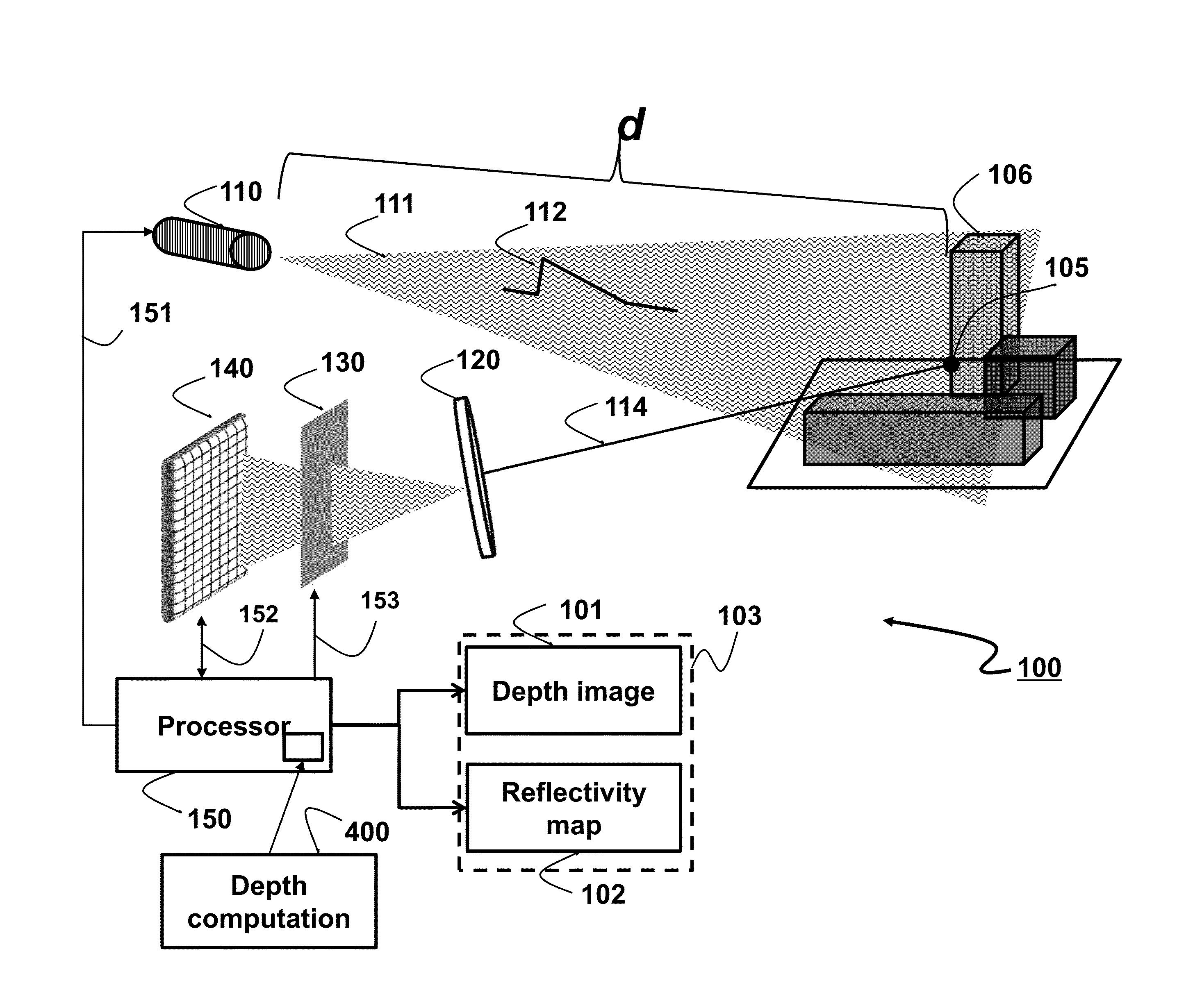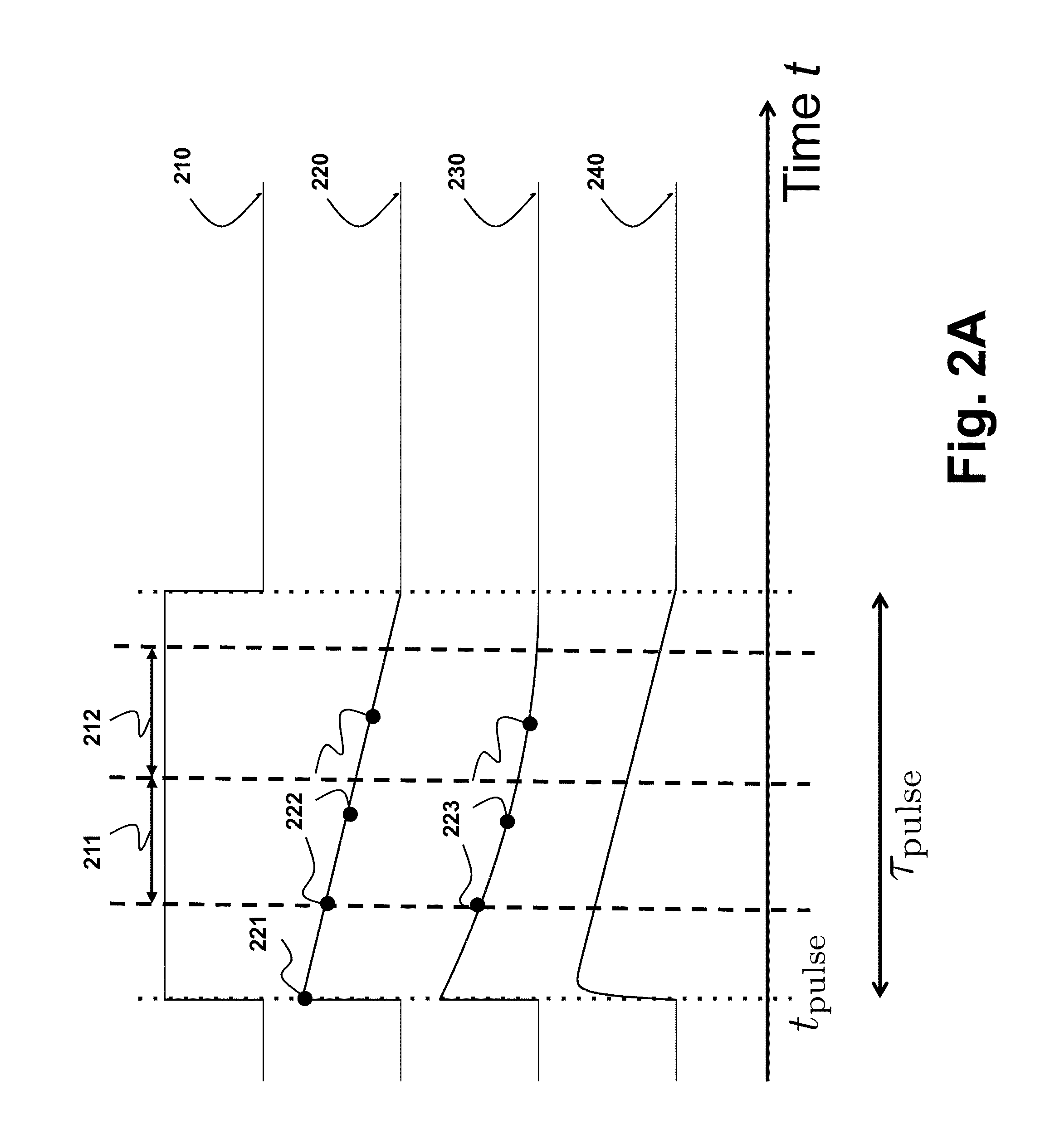Intensity-Based Depth Sensing System and Method
a depth sensing system and intensity-based technology, applied in the field of depth sensing systems and methods, can solve the problems of limited depth sensing system dynamic range and inability to produce reflection at distant points in the scene, and achieve the effect of increasing the dynamic range of depth values
- Summary
- Abstract
- Description
- Claims
- Application Information
AI Technical Summary
Benefits of technology
Problems solved by technology
Method used
Image
Examples
Embodiment Construction
[0022]FIG. 1 shows a schematic (not a block) diagram of a system 100 for determining a depth image 101 indicating distances to points in a scene 106 according to some embodiments of an invention. The system includes a light source 110 for generating and directing a set of light pulses toward the scene. For example, the light source 110 can transmit a wide-beam light pulse 111 with a certain intensity profile 112, i.e., a shape of the pulse. In various embodiments, the intensity profiles of the light pulses are shaped according to desired properties for the sensing system. In one embodiment, the light source is a laser. However, other embodiments use different light sources, such as a photodiode, suitable for transmitting light source with different intensity profiles.
[0023]The light pulse propagates to the scene 106, illuminates the scene and is reflected by the points in the scene. Each point 105 of the scene reflects 114 the incident light back to the system. The reflected light p...
PUM
 Login to View More
Login to View More Abstract
Description
Claims
Application Information
 Login to View More
Login to View More - R&D
- Intellectual Property
- Life Sciences
- Materials
- Tech Scout
- Unparalleled Data Quality
- Higher Quality Content
- 60% Fewer Hallucinations
Browse by: Latest US Patents, China's latest patents, Technical Efficacy Thesaurus, Application Domain, Technology Topic, Popular Technical Reports.
© 2025 PatSnap. All rights reserved.Legal|Privacy policy|Modern Slavery Act Transparency Statement|Sitemap|About US| Contact US: help@patsnap.com



